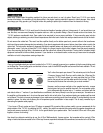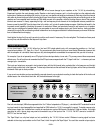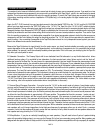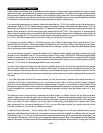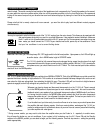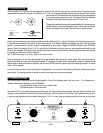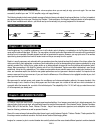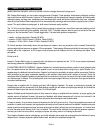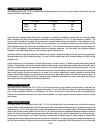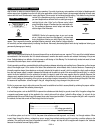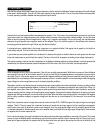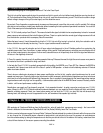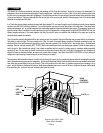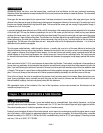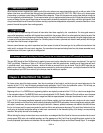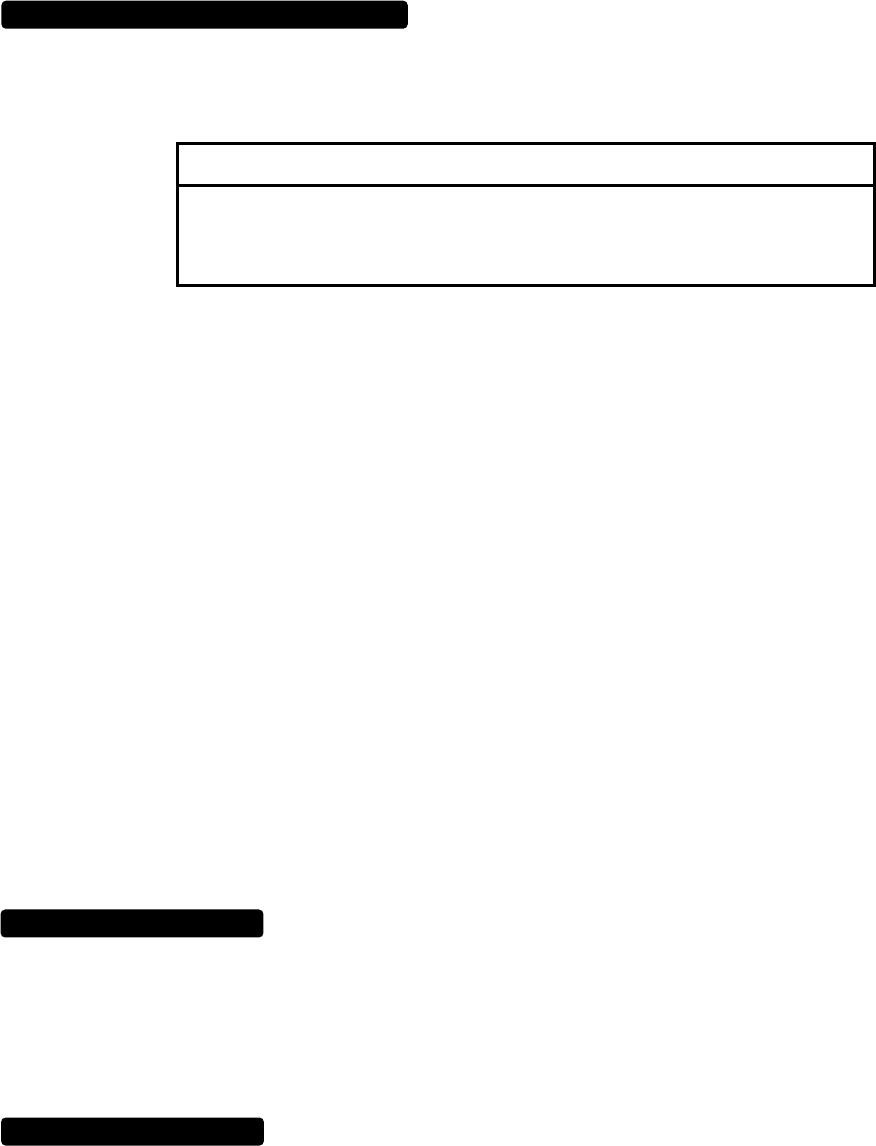
PAGE 11
The feedback settings of the TIGRIS correspond with the following approximate values ( your actual speaker load and the output tab
chosen will affect the values slightly ):
Higher amounts of feedback affect driver control in speakers by increasing the amplifier’s damping factor and reducing speaker
motion. Damping factor refers to the impedance relationship of source impedance (TIGRIS ) to load impedance ( speaker ). The
lower the source impedance, the higher the damping factor. Increased feedback lowers the amplifiers’s output impedance. If your
speakers feature main drivers larger than 8 inches, you may notice tighter, more articulate bass performance by selecting one of the
higher Feedback settings.The highest amount of feedback in the TIGRIS is well below the industry standard in amplifier design, and
the TIGRIS was designed to operate flawlessly without any feedback whatsoever - the Zero setting. User-adjustable Negative
Feedback is thus implemented merely as a fine-tuning and system-matching device.
To correctly evaluate the appropriate amount of feedback for your system, remember to adjust the Volume control during comparative
listening sessions with various feedback settings. You need to offset reduced output with increased feedback by slightly raising
playback levels.
A quick counting survey of the features of Tandem-State Imaging will add to twelve (12) different possible combinations between
Pentode / Triode operation and Negative Feedback. Before this figure begins to look alarmingly complex, take a slow breath: after a
get-to-know period of a week or two, most owners settle for one very obvious setting as the best-sounding for their system. From our
BARON’S returned warranty cards we have learned that one person’s favorite setting is another one’s least used, thus proving the
value of such flexibility. We also have reports on file where, due to a move, redecoration or system upgrade, the favorite setting
changed. Tandem-State Imaging thus also becomes an insurance policy against obsolescene. This feature is so easy to operate - a
flick of a switch, a turn of a knob is all it takes. All adjustments were designed to be operational on-the-go, under signal and during the
performance where changes would be immediately perceivable.
Returning briefly to the power tubes of the TIGRIS, you will notice that here, too, the principle of cross-breeding is in operation: two
different kinds of tubes are employed, in a predetermined, optimal 2:1 ratio. The EL84 tube is known for its dynamic prowess and a
lively, bubbly presentation filled with air and extension. The 6V6, on the other hand, excels with its warmth and prodigious bass.
Combined, the presentation features the sum total of these ingredients: full-range frequency extension, dynamics, warmth, airiness
and liveliness.
An unusual feature of the Headphone Output of the TIGRIS is its linkage to the full array of power tubes, which provide access to
complete Tandem-State Imaging and true Class A output power. Unlike other designs where an op-amp or the preamp stage drive the
headphones, the TIGRIS, via a load resistor, connects the headphones directly to the speaker outputs. Whenever the Headphone
switch on the Rear Bay is set to speaker mute, the entire TIGRIS literally converts into a dedicated headphone amplifier of reference
caliber. Our ultra-low noise output stage was especially optimized to cater to high-resolution Headphones that would reveal back-
ground noise in a lesser design. If you initially experience uncertainty about the exact impact the various settings of Tandem-State
Imaging exhibit over your speakers, we recommend you take an educational tour via a pair of good-quality Headphones. Because you
side step room interactions, the effects will be very pronounced and easily recognizable. With a little experience, you will then know
5 - 1 TANDEM STATE IMAGING: ( Continued )
Stage 1 5dB 4dB 3dB
Stage II 8dB 7dB 5dB
Stage III 12dB 10dB 8dB
Full Pentode 2/3 Pentode 2/3 Triode
5 - 2 POWER TUBE BLEND:
5 - 3 HEADPHONE OUTPUT:



